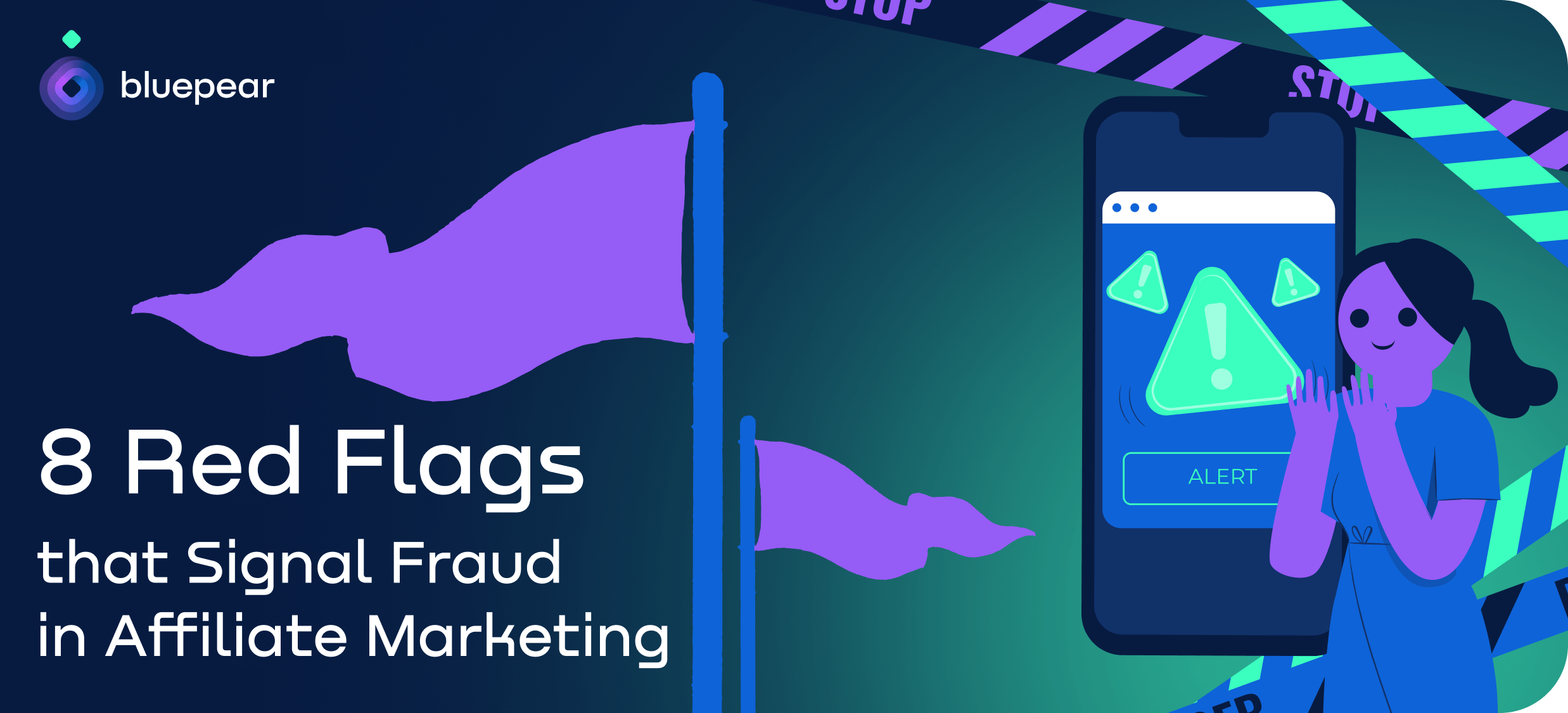
Contents
What is affiliate fraud? It is generating fake clicks and leads or violating the rules of an affiliate program.
Fraud is not that easy to detect because it has a long-term negative effect on KPIs of marketing campaigns. Noticing that something is wrong usually means that fraudsters have already caused significant damage to the brand.
For example, brand bidding is a strategy of bidding on branded search terms by affiliate partners. By doing this, they get a lot of cheap traffic and easy money from the deceived advertiser. Brand bidding results in the situation when:
· CPCs go up.
· CTR becomes lower.
· A brand loses money, paying for already attracted customers.
· Affiliates compete with an in-house marketing team.
Successful ad fraud prevention is possible if you regularly monitor your branded search and keep an eye out for suspicious activity. Let’s learn how to detect fraud in advertising campaigns.
8 Red Flags of Fraud to Watch out for
There are at least eight red flags of fraud which you need to be aware of:
Too many leads from a single traffic source. Click fraud is a problem of affiliate marketing. Some affiliates generate traffic by using automated bots or click farms. Such leads are useless for the brand as they do not provide you with real customers.
A short time gap between an ad click and the target action. This means, a person or a bot visited the affiliate website just to complete the target action without considering the offer. So, you pay for clicks which do not help to promote the product and waste your budget which is a danger of affiliate marketing.
Patterned user behavior. It’s one of the common problems of affiliate marketing. For instance, there can be consistent time intervals between clicks. It is a red flag of fraud as real users do not perform actions in the same way but bots do. Advertisers should not ignore patterned user behavior as it is a real danger of affiliate marketing.
Different GEOs for the same user. That is not typical behavior for real users with rare exceptions. Frequent occurrence of such cases means that you need to check your affiliates more thoroughly to identify fraud. Without working on ad fraud prevention, your marketing budget will be spent without attracting any real clients.
Low conversion rates (below 0.1%) with significant traffic volume. One more way to identify fraud is to check the conversion rates. If they are extremely low, it means that “users” just click on the ad without checking the offer. Also, it may be a signal of fraud in terms of brand bidding. Maybe, users are real but they click on the ad just because they are familiar with your brand. They are not interested in the product itself, so they do not perform the target action.
Conversion rates at 100% or close to it. Whatever you sell, it is unlikely that every user who clicks on the ad would convert at such a high rate. It is a signal of fraud which shows you’d better check your affiliate partners for using bots or click farms.
Suspicious activity at nighttime. This is a problem of affiliate marketing connected with brand bidding. Fraudsters set the ads to be displayed at night, when the marketing team does not work, so that the brand cannot monitor and detect the violations. Because of brand bidding the company loses money and puts at risk its reputation.
Users are active for no more than 3 days. Short user lifespans can help to identify fraud as real users typically exhibit more prolonged and varied engagement with a brand over time. In contrast to bots which “live” as long as they need to click on the ad and complete the targeted action.
Those were eight examples showing what affiliate fraud is, so now you know how to identify fraudsters. If you notice such suspicious activity, it is high time to start regularly monitoring your branded search. Probably, your affiliate partners push low-quality traffic to the brand and waste your marketing budget.
How to Detect Fraud in Advertising Campaigns
Better safe than sorry, ad fraud prevention is necessary even if you have not noticed any signals of fraud yet.
Fortunately, you do not need to manually identify fraud and waste your marketing managers’ time to do it. It is better to use an automated monitoring tool like Bluepear:
- · BluePear monitors branded traffic 24/7 from desktop and mobile devices, different GEOs, browsers and search engines, covering all the branded ads.
- · The tool detects complex fraudulent methods and cloaked websites.
- · BluePear gathers all the screenshots, URLs, redirections and affiliate IDs and draws up a customizable report.
- · The automated tool sends real-time notifications, so that you stay alert on brand violations and make quick decisions.
Using Bluepear for regular monitoring frees up the marketing team, saves CPC and advertising budget, protects brand’s reputation and PPC campaigns. It helps you to work on ad fraud prevention and understand which traffic affiliates push to your brand.

Wrapping up Antifraud systems are of a great importance when it comes to brand protection. With a monitoring tool, you can effectively combat fraudsters, minimize financial losses and work on strategies of ad fraud prevention.
After signing in to Bluepear, you will free up your team for more important tasks. The tool will automatically monitor your branded search, send you real-time notifications about violations and gather all the evidence in reports.

